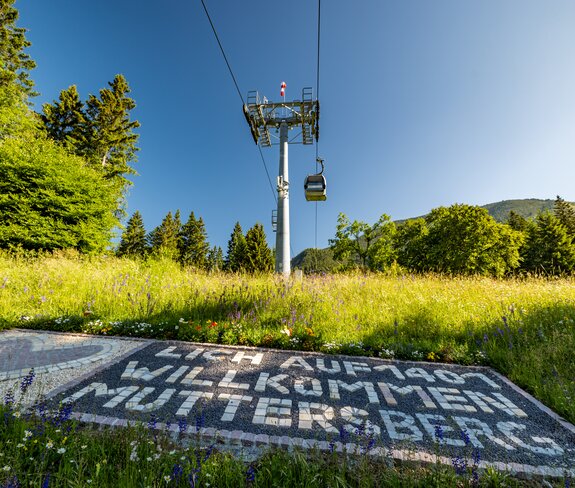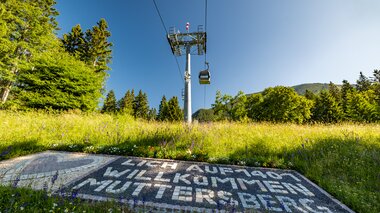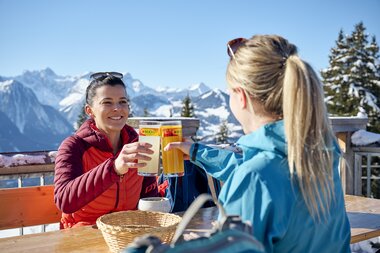
The Muttersberg
In the footsteps of time
My hike on the Muttersberg leads me past historical traces that take me back in time. An empty building with the inscription "Gasthof Muttersberg" attracts my attention and arouses my curiosity to find out more about the history of this place. The Muttersberg is not only a popular excursion destination with a variety of hiking options, but also a place full of living history dating back to Roman times.
Are you curious about the stories that the Muttersberg has to tell? Then join me on this journey through time.
The forests on the Madeisakopf were cleared and used as pastures as early as Roman times. However, it was not until the Walser migrations in the 14th century that the Muttersberg became home to Walser farmers. It is easy to imagine that life at over 1,400 meters was not easy. But the Walser, a mountain people from the Swiss Valais, were known for farming even in regions that were difficult to access. Grain no longer grew at this altitude, but that didn't bother them much - potatoes, milk, cheese and meat were on their menu. Hay farming was a hard job: the farmers carried the "hay burdens" on their heads from the meadows to the stables. These burdens weighed over 50 kilograms and they set off with this load around 20 times a day. Especially in winter, when the one-hour walk into the valley was often impassable, living conditions were tough. Every time I hike up the Muttersberg, I ask myself what it would have been like to live up here and have to make this arduous journey all the time. The farms often changed their owners, but it is striking that many of them bore the name "Muther" - presumably the reason why the settlement on the Madeisakopf is called Muttersberg today.
The last inhabitant
The last inhabitant of Muttersberg moved to the valley in 1969. Since then, the Muttersberg is a local recreation and vacation resort.
More and more farms were abandoned and only used as vacation homes. However, the Muttersberg remained popular as a local recreation area and so more and more infrastructure was created. Probably the best known of these is the Muttersberg cable car. After my hike, I stop off at the Alpengasthof Muttersberg at the mountain station and meet Hansi Bandl for a chat...
The cable car on the Muttersberg has always posed economic challenges.
Johann Bandl
Managing Director Muttersbergbahn
He reports that the cable car was built in 1955. Visitor numbers were good in the beginning, but the predicted figures could not be achieved by far in the following years. In 1970, the closure of the cable car was under discussion, but the municipality of Nüziders and the town of Bludenz provided considerable financial resources to keep it running. Thank god! After the gondolas were replaced in 1992, it was discovered in 1999 that the suspension cables also needed to be replaced. As a result, the town of Bludenz and the municipality of Nüziders sold the lift to the Nova Bergbahngesellschaft, but subject to certain conditions. The company modernized the lift and built today's Alpengasthof Muttersberg. The Silvretta-Nova Bergbahnen-Gesellschaft finally took over the operating guarantee. However, around ten years later, they decided to pull out of the Muttersberg. The story of the financially troubled cable car continued... However, the love of the locals for the Muttersberg saved the cable car, as it came into private ownership. Four citizens from Bludenz and Nüziders stood up for it - one of them is the current partner and operational manager Johann Bandl, who is sitting opposite me right now.
Who would have thought that there was such a fascinating story behind the Muttersberg? Despite all the difficulties, the preservation of the cable car and the Alpengasthof remains an important concern for the local population. The operators see themselves as responsible to the region, as the Muttersberg is an indispensable recreational area, especially for the locals.
We have 80% local guests on the Muttersberg.
Johann Bandl
Managing Director Muttersbergbahn




